Communicative Behavior

In this area we develop models of how humans and animals perceive and produce non-verbal communication. This can be used both to gain understanding about the mechanisms underlying human and animal, e.g. dog, communication and behavior. It can also be used to design systems where communication and behavior understanding is used, e.g. for computerized analysis of cognitive decline or motor disease in infants, or signs of pain in animals such as horses.
People
Research Engineers
- Zofia Lukasiewicz (2024-2025)
- Ernest Pokropek (2021-2022)
MSc Students
- Yonghong Huang
- Magnus Ruben Tibbe (MSc 2024)
- Fanxuan Liu (MSc 2024)
- Theo Wieland (MSc 2024)
- Ioannis Athanasiadis (MSc 2022)
- Frans Nordén (MSc 2021)
- Michaela Söderström (MSc 2021)
- Zhenghong Li (MSc 2020)
- Ci Li (MSc 2020)
- Olga Mikheeva (MSc 2017)
PhD Students
- Chen Ling
- Theo Wieland
- Sofia Broomé (PhD 2022, now at Sleip, Sweden)
- Olga Mikheeva (2017-2022, now at King, Sweden)
- Taras Kucherenko (PhD 2021, now at Electronic Arts, Sweden)
- Judith Bütepage (co-supervisor, PhD 2019, now at Electronic Arts, Sweden)
- Kalin Stefanov (co-supervisor, PhD 2018, now at Monash University, Australia)
Affiliated PhD Students
- João Moreira Alves (Aalborg University, Denmark)
- Jeanne Parmentier (Utrecht University and University of Twente, Netherlands)
- Maheen Rashid (University of California at Davis, USA, PhD 2021, now at Univrses, Sweden)
Post Docs
- Yanxia Zhang (2016, now at Toyota Research Institute, USA)
Collaborators
- Jonas Beskow
- Joakim Gustafson
- Pia Haubro Andersen (Swedish University of Agricultural Sciences, Sweden)
- Johanna Björklund (Umeå University, Sweden)
- Linda Keeling (Swedish University of Agricultural Sciences, Sweden)
- Johan Lundström (Karolinska Institutet, Sweden)
- Gustaf Mårtensson (Mycronic and Karolinska Institutet, Sweden)
- Ulrika Ådén (Karolinska Institutet, Sweden)
Current Projects
ANITA: ANImal TrAnslator (VR 2024-present)
|
|
In recent years there has been an explosive growth in neural network based algorithms for interpretation and generation of natural language. One task that has been addressed successfully using neural approaches is machine translation from one language to another.
The goal of the project proposed here is to make an automated interpreter of animal communicative behavior to human language, in order to allow humans to get an insight into the mind of animals in their care. In this project we focus on the dog species, and will potentially explore common denominators with other species such as horse and cattle. Despite the high potential impact, automated animal behavior recognition is still an undeveloped field. The reason is not the signal itself; the dog species has developed for thousands of years together with humans, and have rich communication and interaction both with humans and with other animal individuals. The main difference from the human language field is instead the lack of data; large data volume is a key success factor in training large neural language models. Thus, data collection is an important venture in this project. Using this data, we propose to develop a deep generative approach to animal behavior recognition from video. Publications
|
The relation between motion and cognition in infants (SeRC 2023-present)
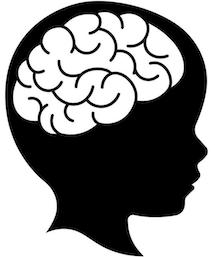 |
In this project, which is part of the SeRC Data Science MCP and a collaboration with the Department of Women’s and Children’s health at Karolinska Institutet, we study the relation between motion patterns and cognition and brain function in infants . The currently primary application is detection of motor conditions in neonates, but we will also study more general connections between motion and future development of cognition and language. Publications |
UNCOCO: UNCOnscious COmmunication (WASP 2023-present)
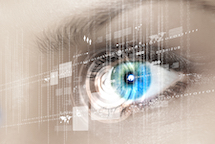 |
This project, which is part of the WARA Media and Language and a collaboration with the Perceptual Neuroscience group at KI, entails two contributions. Firstly, we develop a 3D embodied, integrated representation of head pose, gaze and facial micro expression, that can be extracted from a regular 60 Hz video camera and a desk-mounted gaze sensor. The embodied, integrated 3D representation of head pose, gaze and facial micro expression provides a preprocessing step to the second contribution, a deep generative model for inferring the latent emotional state of the human from the non-verbal communicative behavior. The model is employed in three different contexts: 1) estimating user affect for a digital avatar, 2) analyzing human non-verbal behavior connected to sensor stimuli, e.g., quantify approach/avoidance motor response to smell, 3) estimating frustration in a driving scenario. Publications |
STING: Synthesis and analysis with Transducers and Invertible Neural Generators (WASP 2022-present)
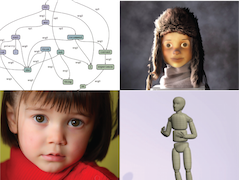 |
Human communication is multimodal in nature, and occurs through combinations of speech, The STING NEST, part of the WARA Media and Language, intends to change this state of affairs by uniting synthesis and analysis with transducers and invertible neural models. This involves connecting concrete, continuous valued sensory data such as images, sound, and motion, with high level, predominantly discrete, representations of meaning, which has the potential to endow synthesis output with human understandable highlevel explanations, while simultaneously improving the ability to attach probabilities to semantic representations. The bidirectionality also allows us to create efficient mechanisms for explainability, and to inspect and enforce fairness in the models. Publications
|
Past Projects
EquineML: Machine Learning methods for recognition of the pain expressions of horses (VR, FORMAS 2017-2022)
 |
Recognition of pain in horses and other animals is important, because pain is a manifestation of disease and decreases animal welfare. Pain diagnostics for humans typically includes self-evaluation and location of the pain with the help of standardized forms, and labeling of the pain by an clinical expert using pain scales. However, animals cannot verbalize their pain as humans can, and the use of standardized pain scales is challenged by the fact that animals as horses and cattle, being prey animals, display subtle and less obvious pain behavior - it is simply beneficial for a prey animal to appear healthy, in order lower the interest from predators. The aim of this project is to develop methods for automatic recognition of pain in horses, with the help of Computer Vision. Publications
|
EACare: Embodied Agent to support elderly mental wellbeing (SSF, 2016-2021)
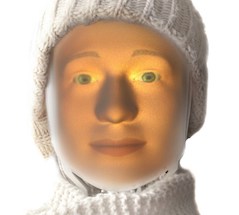 |
The main goal of the multidisciplinary project EACare is to develop an embodied agent – a robot head with communicative skills – capable of interacting with especially elderly people at a clinic or in their home, analyzing their mental and psychological status via powerful audiovisual sensing and assessing their mental abilities to identify subjects in high risk or possibly at the first stages of cognitive decline, with a special focus on Alzheimer’s disease. The interaction is performed according to the procedures developed for memory evaluation sessions, the key part of the diagnostic process for detecting cognitive decline. Publications
|
Data-driven modelling of interaction skills for social robots (KTH ICT-TNG 2016-2018)
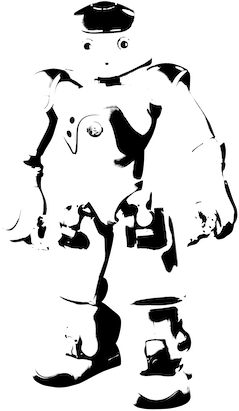 |
This project aims to investigate fundamentals of situated and collaborative multi-party interaction and collect the data and knowledge required to build social robots that are able to handle collaborative attention and co-present interaction. In the project we will employ state-of-the art motion- and gaze tracking on a large scale as the basis for modelling and implementing critical non-verbal behaviours such as joint attention, mutual gaze and backchannels in situated human-robot collaborative interaction, in a fluent, adaptive and context sensitive way. Publications
|
HumanAct: Visual and multi-modal learning of Human Activity and interaction with the surrounding scene (VR, EIT ICT Labs 2010-2013)
 |
The overwhelming majority of human activities are interactive in the sense that they relate to the world around the human (in Computer Vision called the "scene"). Despite this, visual analyses of human activity very rarely take scene context into account. The objective in this project is modeling of human activity with object and scene context. The methods developed within the project will be applied to the task of Learning from Demonstration, where a (household) robot learns how to perform a task (e.g. preparing a dish) by watching a human perform the same task. Publications
|
